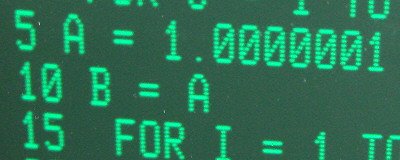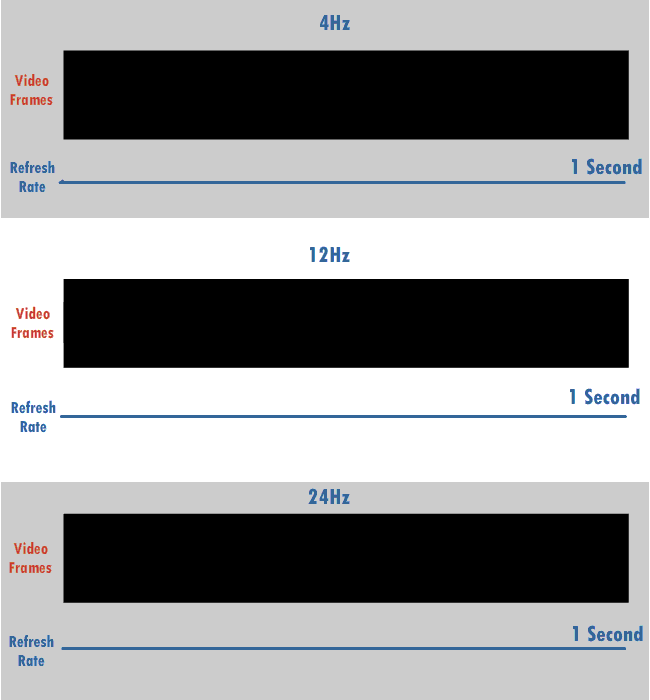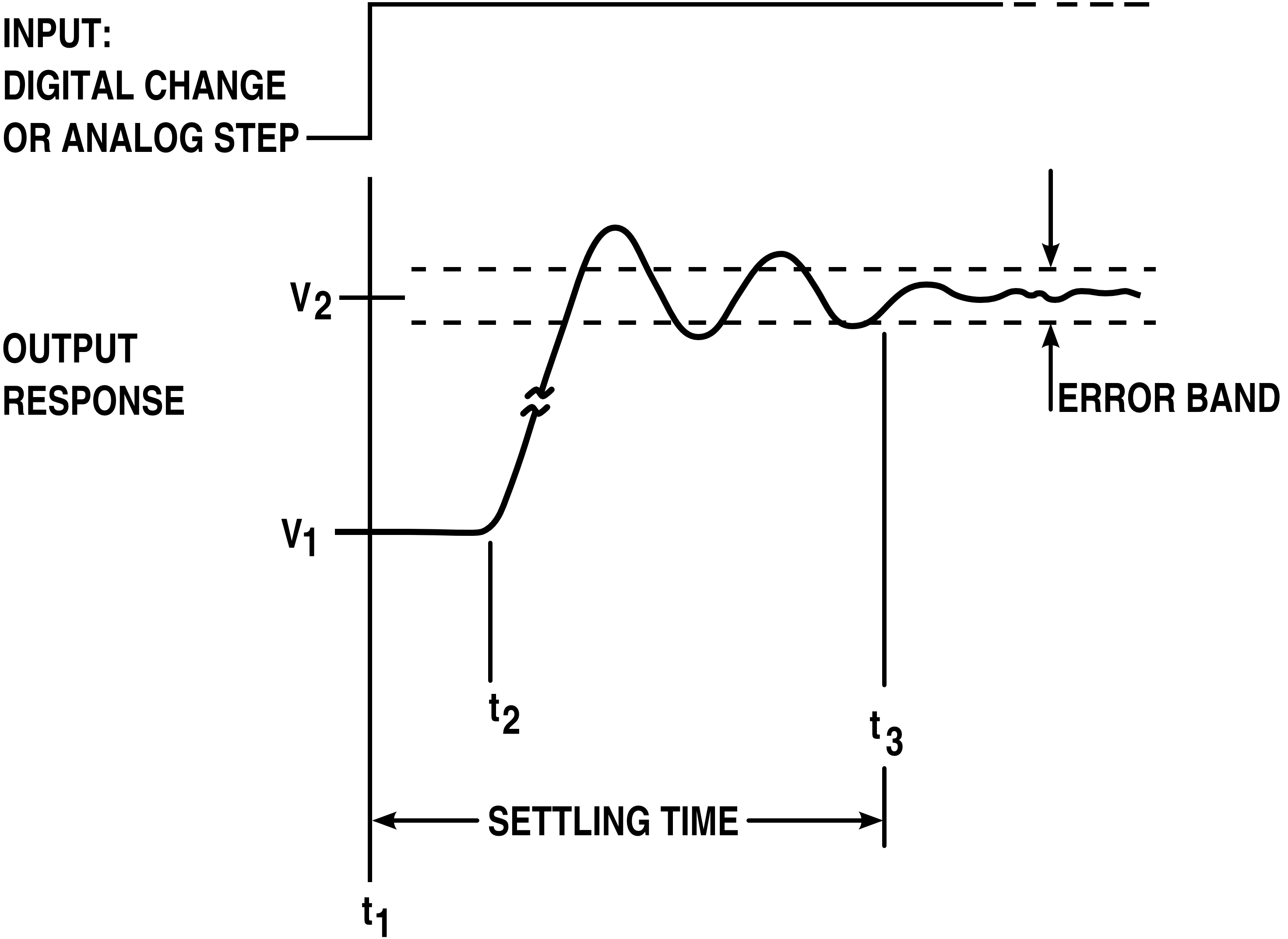|
Raster Scan
A raster scan, or raster scanning, is the rectangular pattern of image capture and reconstruction in television. By analogy, the term is used for raster graphics, the pattern of image storage and transmission used in most computer bitmap image systems. The word ''wiktionary:raster, raster'' comes from the Latin word ''wiktionary:rastrum, rastrum'' (a rake), which is derived from ''wiktionary:radere, radere'' (to scrape); see also rastrum, an instrument for drawing musical staff lines. The pattern left by the lines of a rake, when drawn straight, resembles the parallel lines of a raster: this line-by-line scanning is what creates a raster. It is a systematic process of covering the area progressively, one line at a time. Although often a great deal faster, it is similar in the most general sense to how one's gaze travels when one reads lines of text. In most modern graphics cards the data to be drawn is stored internally in an area of semiconductor memory called the framebuffer. ... [...More Info...] [...Related Items...] OR: [Wikipedia] [Google] [Baidu] |
Deflection Yoke
A deflection yoke is a kind of magnetic lens, used in cathode ray tubes to scan the electron beam both vertically and horizontally over the whole screen. In a CRT television, the electron beam is moved in a raster scan on the screen. By adjusting the strength of the beam current, the brightness of the light produced by the phosphor on the screen can be varied. The cathode ray tube allowed the development of all-electronic television. Electromagnetic deflection yokes are also used in certain radar displays. Magnetic compared to electrostatic deflection Another way of deflecting an electron beam is to put two pairs of electrodes inside the CRT, after the electron gun structure. Electrostatic deflection is common in oscilloscope displays, because it is easier to drive deflection plates at high frequencies, compared to driving the large inductance of a deflection yoke. Compared with electrostatic deflection, magnetic deflection has fewer obstructions inside the tube and so allow ... [...More Info...] [...Related Items...] OR: [Wikipedia] [Google] [Baidu] |
Flicker (screen)
Flicker is a visible change in brightness between cycles displayed on video displays. It applies to the refresh interval on cathode-ray tube (CRT) televisions and computer monitors, as well as plasma computer displays and televisions. Occurrence Flicker occurs on CRTs when they are driven at a low refresh rate, allowing the brightness to drop for time intervals sufficiently long to be noticed by a human eye – see persistence of vision and flicker fusion threshold. For most devices, the screen's phosphors quickly lose their excitation between sweeps of the electron gun, and the afterglow is unable to fill such gaps – see phosphor persistence. A refresh rate of 60 Hz on most screens will produce a visible "flickering" effect. Most people find that refresh rates of 70–90 Hz and above enable flicker-free viewing on CRTs. Use of refresh rates above 120 Hz is uncommon, as they provide little noticeable flicker reduction and limit available resolution. ... [...More Info...] [...Related Items...] OR: [Wikipedia] [Google] [Baidu] |
Phosphor Persistence
A cathode-ray tube (CRT) is a vacuum tube containing one or more electron guns, which emit electron beams that are manipulated to display images on a phosphorescent screen. The images may represent electrical waveforms on an oscilloscope, a frame of video on an analog television set (TV), digital raster graphics on a computer monitor, or other phenomena like radar targets. A CRT in a TV is commonly called a picture tube. CRTs have also been used as memory devices, in which case the screen is not intended to be visible to an observer. The term ''cathode ray'' was used to describe electron beams when they were first discovered, before it was understood that what was emitted from the cathode was a beam of electrons. In CRT TVs and computer monitors, the entire front area of the tube is scanned repeatedly and systematically in a fixed pattern called a raster. In color devices, an image is produced by controlling the intensity of each of three electron beams, one for each add ... [...More Info...] [...Related Items...] OR: [Wikipedia] [Google] [Baidu] |
Frame Rate
Frame rate, most commonly expressed in frame/s, or FPS, is typically the frequency (rate) at which consecutive images (Film frame, frames) are captured or displayed. This definition applies to film and video cameras, computer animation, and motion capture systems. In these contexts, frame rate may be used interchangeably with and refresh rate, which are expressed in hertz. Additionally, in the context of computer graphics performance, FPS is the rate at which a system, particularly a GPU, is able to generate frames, and refresh rate is the frequency at which a display shows completed frames. In electronic camera specifications frame rate refers to the maximum possible rate frames could be captured, but in practice, other settings (such as exposure time) may reduce the actual frequency to a lower number than the frame rate. Human vision The temporal sensitivity and resolution of human vision varies depending on the type and characteristics of visual stimulus, and it differs betw ... [...More Info...] [...Related Items...] OR: [Wikipedia] [Google] [Baidu] |
Refresh Rate
The refresh rate, also known as vertical refresh rate, vertical scan rate or vertical frequency in reference to terminology originating with the cathode-ray tubes (CRTs), is the number of times per second that a raster-based display device displays a new image. This is independent from frame rate, which describes how many images are stored or generated every second by the device driving the display. On CRT displays, higher refresh rates produce less flickering, thereby reducing eye strain. In other technologies such as liquid-crystal displays, the refresh rate affects only how often the image can potentially be updated. Non-raster displays may not have a characteristic refresh rate. Vector displays, for instance, do not trace the entire screen, only the actual lines comprising the displayed image, so refresh speed may differ by the size and complexity of the image data. For computer programs or telemetry, the term is sometimes applied to how frequently a datum is updated with a ... [...More Info...] [...Related Items...] OR: [Wikipedia] [Google] [Baidu] |
XFree86
XFree86 is an implementation of the X Window System. It was originally written for Unix-like operating systems on IBM PC compatibles and was available for many other operating systems and platforms. It is free software, free and Open-source software, open source software under the XFree86 License version 1.1. It was developed by the XFree86 Project, Inc. The lead developer was David Dawes. The last released version was 4.8.0, released December 2008. The last XFree86 Concurrent Versions System, CVS commit was made on May 18, 2009; the project was confirmed dormant in December 2011. For most of the 1990s and early 2000s, the project was the source of most innovation in X and was the ''de facto'' steward of X development. Until early 2004, it was almost universal on Linux and the Berkeley Software Distribution, BSDs. In February 2004, with version 4.4.0, The XFree86 Project began distributing new code with a copyright license that the Free Software Foundation considered GNU General ... [...More Info...] [...Related Items...] OR: [Wikipedia] [Google] [Baidu] |
XFree86 Modeline
: ''A mode line may also refer to a line for the Emacs and Vim (text editor), Vim editors that provides information about the file and modes.'' A modeline is a configuration line in xorg.conf or the XFree86 configuration file (XF86Config) that provides information to the display server about a connected computer monitor or television and how to drive it at a specified display resolution. The Modeline is based on the Generalized Timing Formula or the Coordinated Video Timings standards produced by VESA. Modelines are now rarely used, but XFree86 and the Xorg Server still allow them to be set should the EDID information be inadequate. Syntax Each modeline has ten parameters, beginning with a label for the resolution being specified. The second parameter specifies the rate of the pixel clock in megahertz. Then follow four numbers that together specify the ''x''-resolution (width) and related parameters, and four numbers that specify the ''y''-resolution (height). * Modeline syntax ... [...More Info...] [...Related Items...] OR: [Wikipedia] [Google] [Baidu] |
Ringing (signal)
In electronics, signal processing, and video, ringing is oscillation of a signal, particularly in the step response (the response to a sudden change in input). Often ringing is undesirable, but not always, as in the case of resonant inductive coupling. It is also known as hunting. It is also known as ripple, particularly in electricity or in frequency domain response. Electrical circuits In electrical circuits, ringing is an oscillation of a voltage or current. Ringing can be undesirable because it causes extra current to flow, thereby wasting energy and causing extra heating of the components; it can cause unwanted electromagnetic radiation to be emitted; it can increase settling time for the desired final state; and it may cause unwanted triggering of bistable elements in digital circuits. Ringy communications circuits may suffer falsing. Two electrical sources of this ringing are: # A resonant transient response due to undesired parasitic capacitances and inductanc ... [...More Info...] [...Related Items...] OR: [Wikipedia] [Google] [Baidu] |
Fall Time
In electronics, fall time (pulse decay time) t_f is the time taken for the amplitude of a pulse to decrease (fall) from a specified value (usually 90% of the peak value exclusive of overshoot or undershoot) to another specified value (usually 10% of the maximum value exclusive of overshoot or undershoot). Limits on undershoot and oscillation (also known as ringing and hunting) are sometimes additionally stated when specifying fall time limits. See also *Rise time *Transition time Transition or transitional may refer to: Mathematics, science, and technology Biology * Transition (genetics), a point mutation that changes a purine nucleotide to another purine (A ↔ G) or a pyrimidine nucleotide to another pyrimidine (C ↔ ... References *{{FS1037C MS188 Transient response characteristics ... [...More Info...] [...Related Items...] OR: [Wikipedia] [Google] [Baidu] |
Sync Pulse
Analog television is the original television technology that uses analog signals to transmit video and audio. In an analog television broadcast, the brightness, colors and sound are represented by amplitude, phase and frequency of an analog signal. Analog signals vary over a continuous range of possible values which means that electronic noise and interference may be introduced. Thus with analog, a moderately weak signal becomes snowy and subject to interference. In contrast, picture quality from a digital television (DTV) signal remains good until the signal level drops below a threshold where reception is no longer possible or becomes intermittent. Analog television may be wireless (terrestrial television and satellite television) or can be distributed over a cable network as cable television. All broadcast television systems used analog signals before the arrival of DTV. Motivated by the lower bandwidth requirements of compressed digital signals, beginning just after ... [...More Info...] [...Related Items...] OR: [Wikipedia] [Google] [Baidu] |
Sawtooth Wave
The sawtooth wave (or saw wave) is a kind of non-sinusoidal waveform. It is so named based on its resemblance to the teeth of a plain-toothed saw with a zero rake angle. A single sawtooth, or an intermittently triggered sawtooth, is called a ramp waveform. The convention is that a sawtooth wave ramps upward and then sharply drops. In a reverse (or inverse) sawtooth wave, the wave ramps downward and then sharply rises. It can also be considered the extreme case of an asymmetric triangle wave. The equivalent piecewise linear functions x(t) = t - \lfloor t \rfloor x(t) = t \bmod 1 based on the floor function of time ''t'' is an example of a sawtooth wave with period 1. A more general form, in the range −1 to 1, and with period ''p'', is 2\left( - \left\lfloor + \right\rfloor\right) This sawtooth function has the same phase as the sine function. While a square wave is constructed from only odd harmonics, a sawtooth wave's sound is harsh and clear and its spectrum cont ... [...More Info...] [...Related Items...] OR: [Wikipedia] [Google] [Baidu] |





